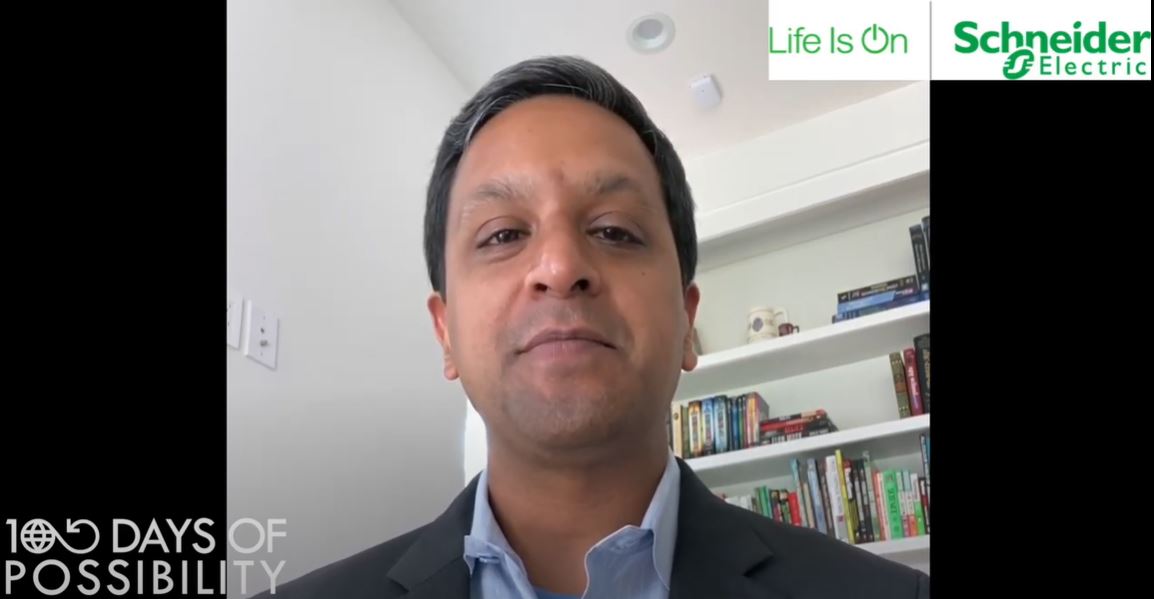#MoveTheDate
Existing off-the-shelf, commercial technologies for buildings, industrial processes, and electricity production could move Overshoot Day at least 21 days, without any loss in productivity or comfort, according to an analysis by researchers from Global Footprint Network and Schneider Electric.
What is the solution?
In the city of Grenoble, at the heart of the French Alps, a new 26 000 m2 smart office park will bring together 5 000 local employees. The IntenCity complex aims to consume nearly 10 times less energy than the average European building.
This solution improves our resource security in the energy category.
How does it #MoveTheDate?
IntenCity stands out for its extremely low annual energy consumption at 37 kWh per m2, compared to an average of 330 kWh per m2 for existing buildings in Europe. Its low energy consumption will be offset by the electricity produced by 4 000 solar panels and two vertical wind turbines on the roof.
How is it scalable?
Besides its own buildings, Schneider Electric’s building technologies are already powering more than one million buildings around the world, including 40% of the world’s hospitals and three of the five world’s largest hotel chains.
What is the solution?
In the city of Grenoble, at the heart of the French Alps, a new 26 000 m2 smart office park will bring together 5 000 Schneider Electric local employees. The IntenCity complex aims to consume nearly 10 times less energy than the average European building.
This solution improves our resource security in the energy category.
How does it #MoveTheDate?
IntenCity stands out for its extremely low annual energy consumption at 37 kWh per m2, compared to an average of 330 kWh per m2 for existing buildings in Europe. Its low energy consumption will be offset by the electricity produced by 4 000 solar panels and two vertical wind turbines on the roof.
How is it scalable?
Besides its own buildings, Schneider Electric’s building technologies are already powering more than one million buildings around the world, including 40% of the world’s hospitals and three of the five world’s largest hotel chains.
Buildings are a critical piece of the transition to a net zero future as they are the single largest contributor to CO2 emissions (40%). They are where we will spend 90% of our lifetimes. Buildings of the future need to be sustainable, resilient, hyper-efficient and people-centric, replenishing energy and resources whilst protecting us when the unexpected happens.
In the city of Grenoble, at the heart of the French Alps, IntenCity provides a glimpse of how the public and private sectors can join forces to build cleaner, healthier and more vibrant communities.
Schneider Electric’s new smart office park aims to consume just 37 kWh/m² each year — nearly 10 times less energy than the average European building. Rooftop solar panels, two onsite wind turbines, use of underground water and smart technology solutions enable the complex to consume and produce over one year the same amount of electrical energy while also sharing and coordinating energy with the surrounding community through a unique microgrid partnership.
There’s no benefit in waiting!
Acting now puts you at a strategic advantage in a world increasingly defined by ecological overshoot. Countless solutions exist that #MoveTheDate. They’re creative, economically viable, and ready to deploy at scale. With them, we can make ourselves more resilient and #MoveTheDate of Earth Overshoot Day. If we move the date 6 days each year, humanity can be out of overshoot before 2050.

